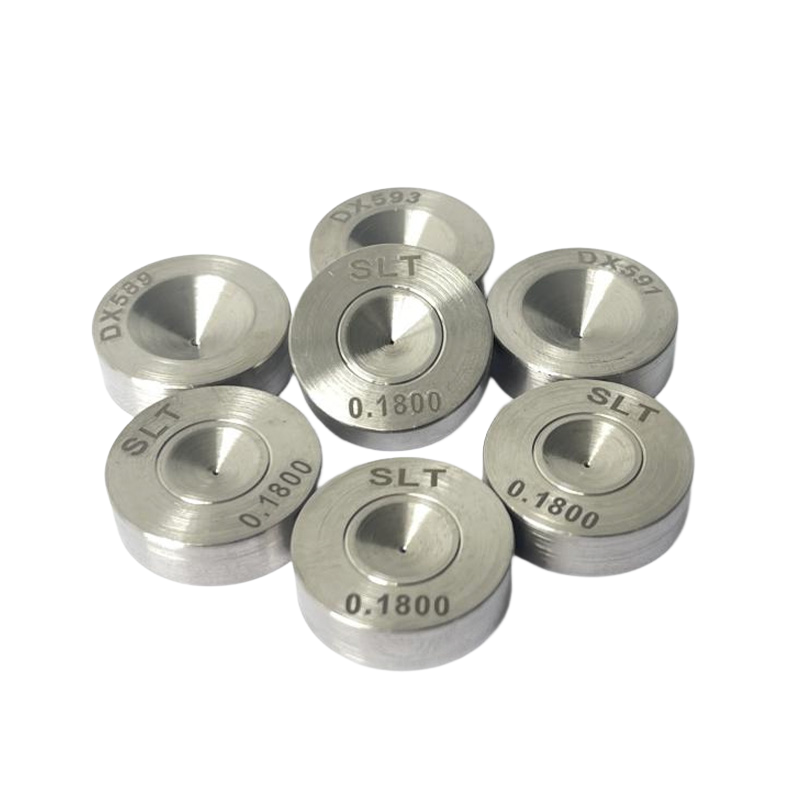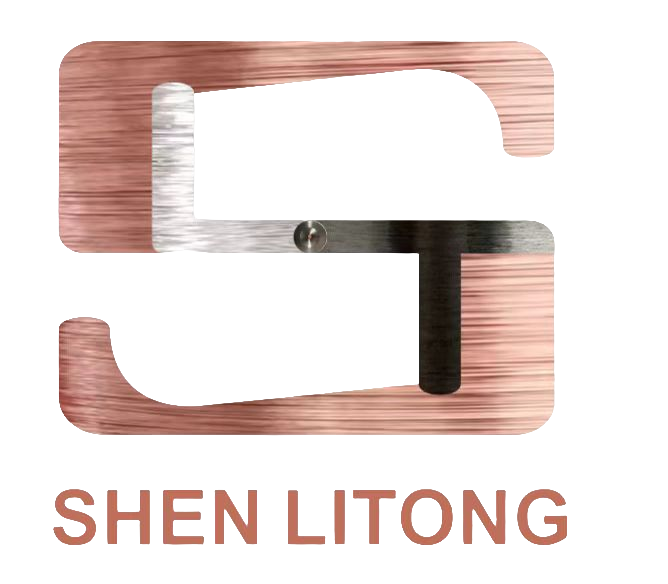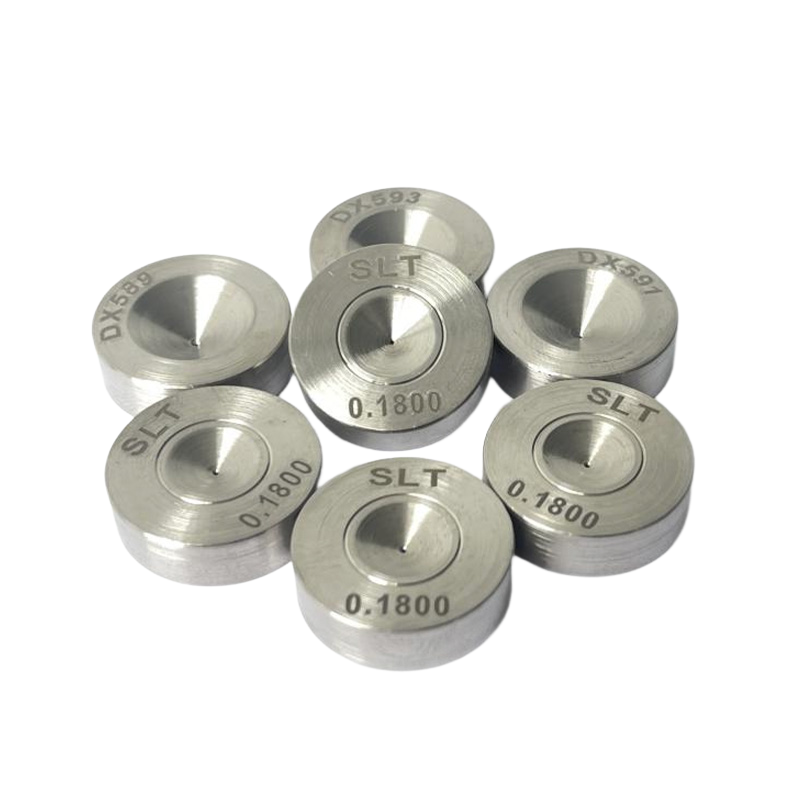In metal pressure processing, the metal is forced through the die under the action of external force, the cross-sectional area of the metal is compressed. The tool that obtains the required cross-sectional area shape and size is called wire drawing die.
Wire drawing dies have a wide range of uses, such as high-precision wires used in electronic devices, radars, televisions, instruments and aerospace, as well as commonly used tungsten wires, molybdenum wires, stainless steel wires, wire and cable wires and various alloy wires are all drawn with diamond wire drawing dies. The diamond wire drawing die adopts natural diamond as raw material, so it has strong wear resistance and extremely long service life. The production process of wire drawing die inserts includes several process steps, such as pressing, drawing and turning.
The wire drawing die is a kind of mould that the metal wire pass through to reach the size that people need from thick to thin gradually. This special mold is the wire drawing die. The core of the wire drawing die is generally made of natural diamonds, artificial diamonds (man-made diamonds, such as GE, PCD, synthetic materials, etc.). Copper wire drawing dies are for drawing soft wires. There are dies also for drawing hard wires, like tungsten wire, etc. The angle of the dies for drawing tungsten wire is relatively small, generally 12- 14 degrees.
Wire drawing dies include diamond wire drawing dies, tungsten carbide wire drawing dies, plastic wire drawing dies, etc.

 English
English Español
Español Português
Português русский
русский français
français 日本語
日本語 Deutsch
Deutsch Tiếng Việt
Tiếng Việt Nederlands
Nederlands ไทย
ไทย Polski
Polski 한국어
한국어 Svenska
Svenska magyar
magyar Malay
Malay বাংলা
বাংলা Dansk
Dansk Suomi
Suomi हिन्दी
हिन्दी Pilipino
Pilipino Türk
Türk Gaeilge
Gaeilge عربى
عربى Indonesia
Indonesia norsk
norsk čeština
čeština Ελληνικά
Ελληνικά Українська
Українська नेपाली
नेपाली Burmese
Burmese български
български ລາວ
ລາວ Latine
Latine slovenský
slovenský Lietuvos
Lietuvos








